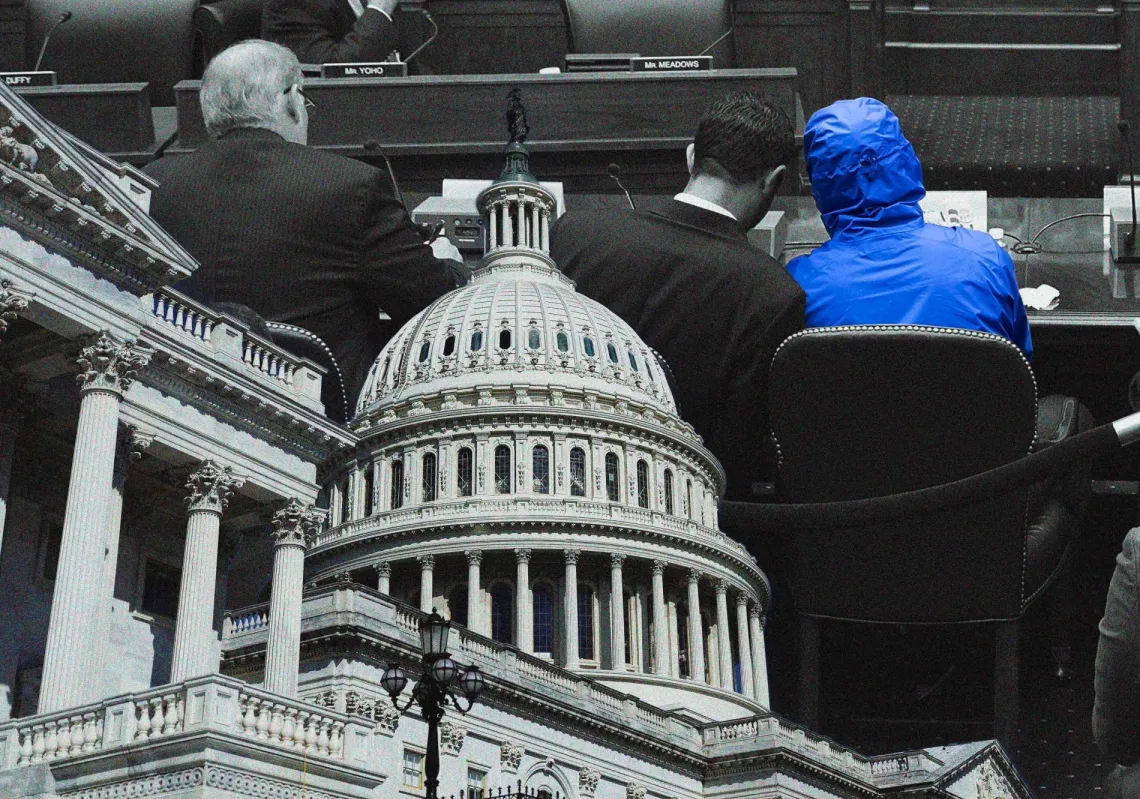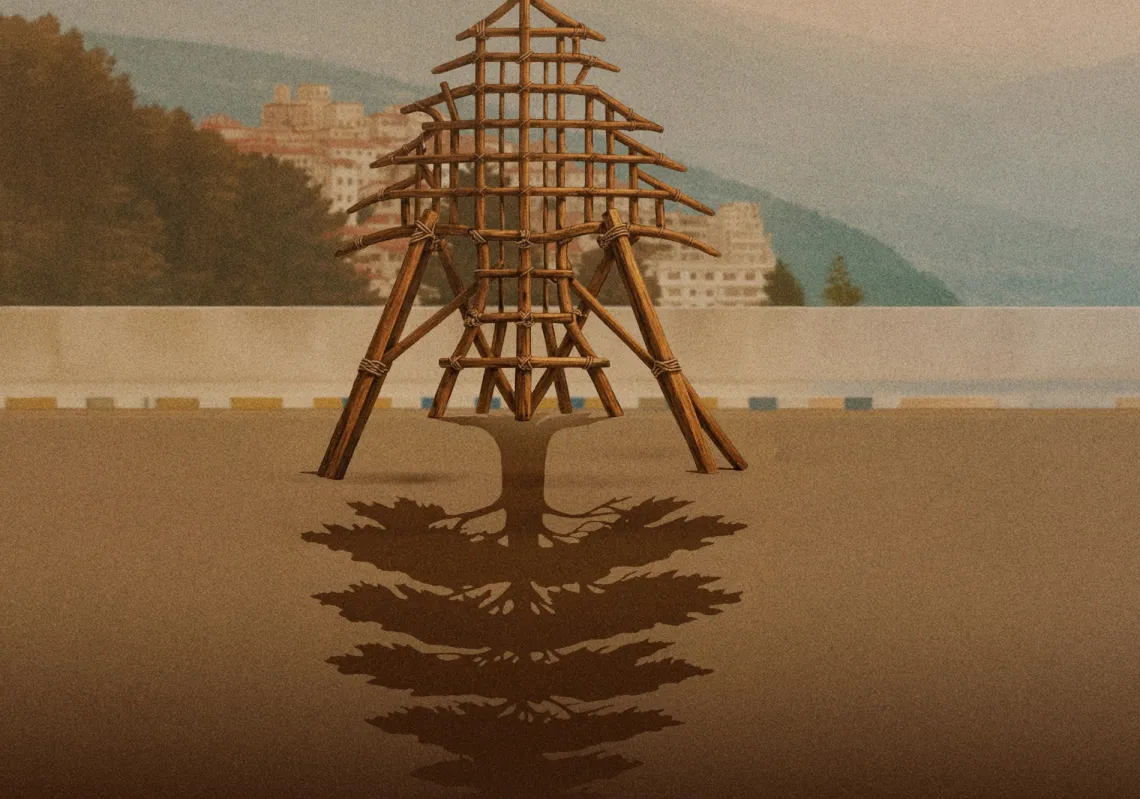 Translator’s Introduction: Pension Arts in Dubai. WALID RAAD/ GALLERY SFEIR-SEMLER[/caption]Lebanese artist Walid Raad rose to international acclaim in the early 2000s with The Atlas Group, established in Lebanon in 1999 with Raad as its only known member. The Atlas Group intended to “research and document the contemporary history of Lebanon.” In other words, like other post-civil war artists of his generation, this project formulated an attempt to work in response to the events of the Lebanese Civil War (1975–1990), the effects of which still resonate with the Lebanese people. In a series of works linked to The Atlas Group’s archive, the thin lines between fact and fiction, history and the imaginary, the production and construction of memory, and the documented and the performed are continuously blurred. Raad has continued to work on these themes in his current work.
Translator’s Introduction: Pension Arts in Dubai. WALID RAAD/ GALLERY SFEIR-SEMLER[/caption]Lebanese artist Walid Raad rose to international acclaim in the early 2000s with The Atlas Group, established in Lebanon in 1999 with Raad as its only known member. The Atlas Group intended to “research and document the contemporary history of Lebanon.” In other words, like other post-civil war artists of his generation, this project formulated an attempt to work in response to the events of the Lebanese Civil War (1975–1990), the effects of which still resonate with the Lebanese people. In a series of works linked to The Atlas Group’s archive, the thin lines between fact and fiction, history and the imaginary, the production and construction of memory, and the documented and the performed are continuously blurred. Raad has continued to work on these themes in his current work.
For his second solo exhibition at Beirut’s Gallery Sfeir-Semler, Scratching on Things I Could Disavow: A History of Art in the Arab World, Raad expanded on the topics explored in his first solo exhibition at Sfeir-Semler entitled, A History of Modern and Contemporary Arab Art _ Part I _ Chapter 1: Beirut 1992–2005, which was shown in 2008. Here, he reacts to the accelerated boom in arts and culture in the Arab region, and more particularly the large-scale museum projects in The Gulf. The first chapter puts forward a statement that is highly cerebral and to an extent hermetic: for instance, Raad showed a dollhouse-sized exhibition of his own work, and the hardly visible names of the past century’s most influential Lebanese artists fitted in white vinyl on the white cube’s white wall. Both gestures comment on shrinkage and erasure, on the relativity, (non-)visibility and positioning of artists within grander geopolitical schemes.
[inset_left]Like other post-civil war artists of his generation, this project was an attempt to work in response to the events of the Lebanese Civil War.[/inset_left]
For the second chapter of this project, Raad continues to engage with the writings of artist and writer Jalal Toufic, but hones in on the aesthetic and formal dimensions of “how culture and tradition in the Arab world may have been affected, materially and immaterially, by the various wars that have been waged there by native and external powers.”
Scratching on Things I Could Disavow is a more engaging and playful exhibition than his first solo exhibition. Although the individual pieces are aesthetically intriguing, separately they might feel a bit alienating. Together, they make for a rich, puzzling and layered narrative that, despite its highly polemical subject matter, is specked with humor and speculation. The first work we encounter is an animated map with audio guide on the 2011 Artist Pension Trust (APT), an international investment trust for artists to secure their financial future by donating their artwork to its collection. In 2007, Raad was invited to participate in the APT. What follows is an exposé worthy of a spy novel. Its main ingredients include the Israeli Mossad, Israeli military intelligence, Middle Eastern politics, the art market, data mining, risk management, and a good dose of conspiracy theory and paranoia.
While Raad’s narrative might sound unbelievable to an outsider, the result of this project has been that many artists from the Arab region have pulled out of APT or have refused to collaborate with the trust. Raad’s interests are firmly rooted in a complex political reality. Whether we believe Raad’s take on events is secondary—what matters is that we start revisiting our own perceptions.
The photographs Preface to the Second Edition (2012) shows a series of minimalist greyish images, which on closer inspection betray a deformed reflection that looks like a framed painting or like gallery lighting. The wall text describes how Raad was taken aback that most paintings on display at the Museum of Modern Art in Doha lacked reflection. With his photographs he intends to make up for that lack, in the hope that they will leave his images and attach themselves to the paintings in Doha. This poetic gesture is also quite tongue-in-cheek: not only has Raad reduced the actual paintings to their ghostlike reflections—in other words, the art itself is made to be of no consequence—but he has turned this mechanism into a critique of how, in many museums currently being built in The Gulf, there is a lack of critical context, or reflection, to situate the work.
Similar clues that a building—or even a collection—does not a museum make can be discerned in the cut-outs of museum parquets and museum walls. One gallery space is completely taken up by these architectural structures, including a video projection that loops empty gallery spaces. The shadow play and the forms of the cut-outs are delightful. There is a sense here that Raad is staging something with these elements as his props. It is not entirely clear, however, what that something is. It is as if Raad were cataloging the material nuts and bolts of what makes up an exhibition or an art institution: the walls, the floors, the anticipation that these spaces are to be filled with wonderful and meaningful things. Then his suggestive wall texts bring the imaginary promise of it all crashing down. The potential of these spaces for art in the Emirates or in Doha remain defined by an absence; Raad veils his cautions thinly.
One of the most evocative pieces in the show is Appendix XVIII: Plates 22–257, a series of colorful plates that recount Lebanon’s violent past and how it relates to its art history not through artworks, but through the collateral—yet necessary—practices that surround the production of artwork: correspondences from gallerists, book covers, budgets, catalog indexes, price lists, lists of sponsors, PR material and so on. Raad has reworked these into aesthetic and historical document objects. One plate is a letter, its lines all bunched together, of his own gallerist, Andrée Sfeir-Semler, to the Lebanese Ministry of Culture requesting national participation in the Venice Biennial. There was no Lebanese pavilion in 2005. With this series, Raad has created a fragmented and atypical archive of Lebanese art history.
Scratching on Things I Could Disavow is a show that reveals itself gradually but generously. Its critique is not blatant, but instead asks the viewer to do a bit of work. There is no doubt that Raad, a vocal critic of the frenzied building and city-branding-through-culture expansion in the Gulf, as his activist work with the GulfLabor coalition proves, makes us pause and rethink these developments. Indeed, he chooses not to disavow anything, and in the process makes us complicit. By doing that, he does much more than just scratch at things: he exposes more than the title suggests.








